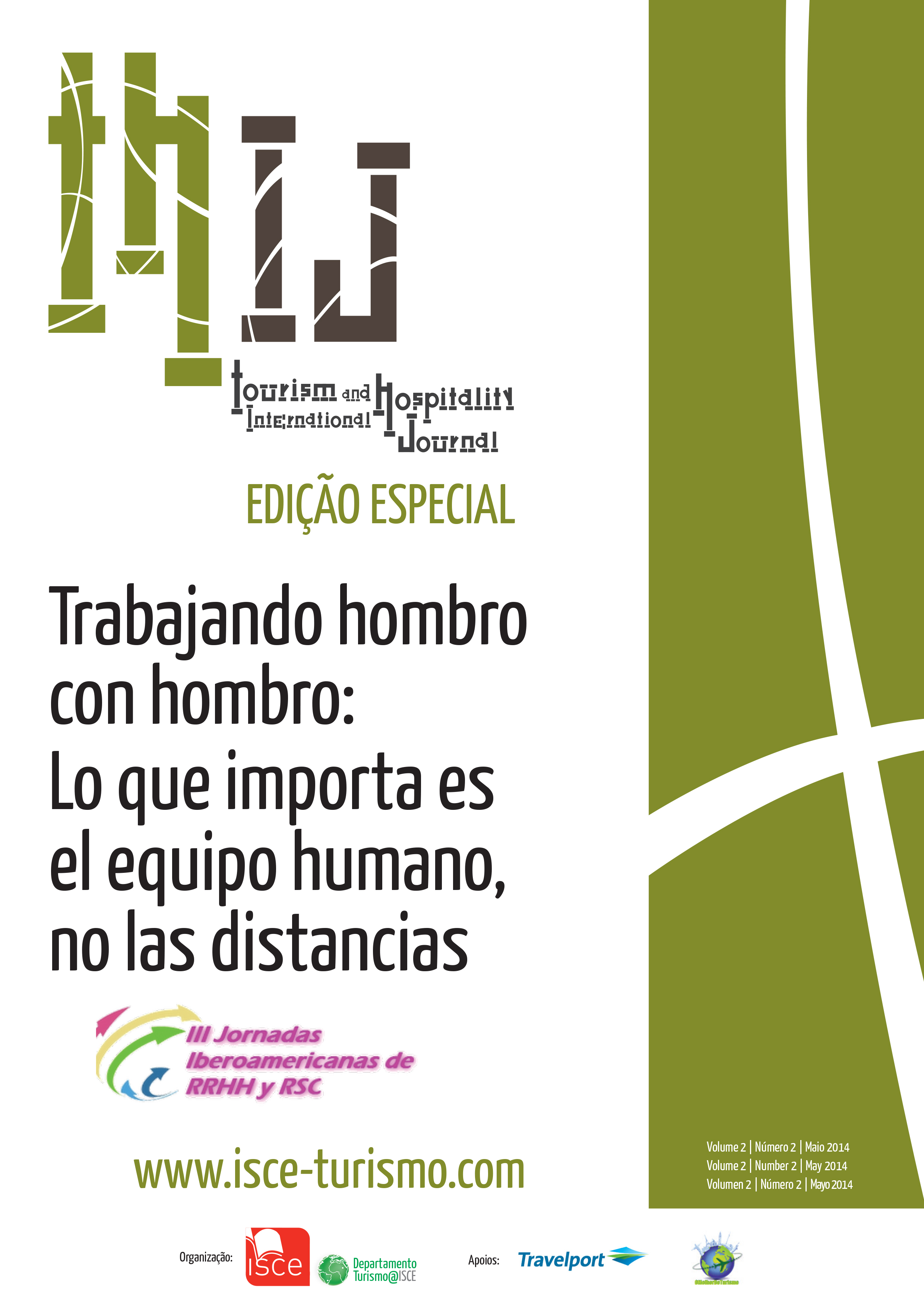From the mass guide to the specialised guide. A new proposal for guided tours in Barcelona.
DOI:
https://doi.org/10.57883/thij2(2)2014.30138Keywords:
Sustainable Tourism, Responsibility, Respect, Guide, Guided toursAbstract
Tourist guides, who provide a service, must bridge the gap between the needs of the client-tourist and the environment in which they work. Tourism in the 21st century must evolve into a model of local sustainability. Both tourists and tourist guides should seek to strike the right balance so that steps can be taken in this direction. In essence, sustainable tourism means making the smallest possible negative impact on the environment and local surroundings by creating tools that will protect them, whilst contributing to the economy and employment. (Blasco, 2006). Guided tours should encourage positive relationships between visitors and the local population, and vice versa, thus establishing common ground based on mutual respect for cultural and social values. This study, which takes sustainable tourism as the basis for a new model of guided tours, sets out a new paradigm for the way in which tourist guides work, turning the guide of the masses into a specialised guide. Furthermore, tours that fall in line with the Global Code of Ethics for Tourism (UNWTO, 2011) can contribute to sustainability and the responsible use of tourist destinations. This paper has been written based on a historical analysis of guided tours in the city of Barcelona; a specific survey conducted on tourist guides in order to find out the types and characteristics of their tours; and the conclusions drawn from the responses obtained.
References
Aguilar, J. (2012). Nebrija Universidad. Recuperado de http://www.nebrija.com/catedras/nebrija-santander-responsabilidad-social/rsc.php
Ajuntament de Barcelona. (2014). Comerç. Recuperado de http://comerc.bcn.cat/emblematics
BarcelonaTurisme. (2011a). Estadísticas de turismo a Barcelona. Barcelona: Turisme de Barcelona.
BarcelonaTurisme. (2012b). Estadístiques de Turisme a Barcelona i Província. Barcelona: Turisme de Barcelona.
Barke, M., Towner, J. & Newton, M. (1996). Tourism in Spain: Critical issues. Wallingford: CAB International.
Bayón, F. (1999). 50 años del turismo español. Un análisis histórico y estructural. Madrid: Centro de Estudios Ramón Areces.
Blasco, A. (2006). Tipologías turísticas. Girona: Xarxa d'Escoles de Turisme.
Camarero, C., & Garrido, M. (2004). Marketing del patrimonio cultural. Madrid: ESIC.
Favá, M., & Amorós, C. (2007). Guapos per sempre. Botigues emblemàtiques de Barcelona. Barcelona: Institut del Paisatge Urbà.
Galí, N., & Majó, J. (1999). El guiatge turístic. Girona: Universitat de Girona.
Hedrick-Wong, Y. (2013). Top 20 global destination Cities in 2013. London: MasterCard.
INE. (18 de Diciembre de 2012). Cuenta Satélite del Turismo de España. Base 2008. Notas de prensa, 1-4.
ITR. (2012). Turisme 2015 BCN. Recuperado de http://www.turismebcn2015.cat/T2015WEB/Turisme-Responsable/_Xyu6yUCJRlp1Y1wJqjt_6tR4sPyv4ICRjApPVeSevKC3ukgb-XG2cg
Ministerio de Información y Turismo. (1963). Agencia Estatal Boletín Oficial del Estado. B. O. del E., 18226.
Montaner, J. (1996). Estructura del mercado turístico. Madrid: Síntesis.
OMT. (1995). Carta de turismo sostenible, aprobada en la Conferencia Mundial sobre turismo sostenible. Lanzarote, Islas Canarias, España.
OMT. (1999). Código Ético Mundial para el Turismo. Santiago de Chile, Chile: Naciones Unidas.
OMT. (2013). Organización Mundial del Turismo OMT. Recuperado de http://www2.unwto.org/es/node/38072
Picazo, C. (1996). Asistencia y guía a grupos turísticos. Madrid: Síntesis.
Picazo, C. (2011). Procesos de guia y asistencia turística. Madrid: Sintesis.
Turisme de Barcelona. (2014). Barcelona supera los 7,5 millones de turistas por primera vez. Barcelona: Turisme de Barcelona.
UNWTO (2011). World Tourist Organization. Recuperado de www.unwto.org
Downloads
Published
How to Cite
Issue
Section
License
Copyright (c) 2023 This work is licensed under a Creative Commons - Attribution 4.0 International (CC BY 4.0)

This work is licensed under a Creative Commons Attribution 4.0 International License.
This work is published under the Creative Commons Attribution 4.0 International License.







